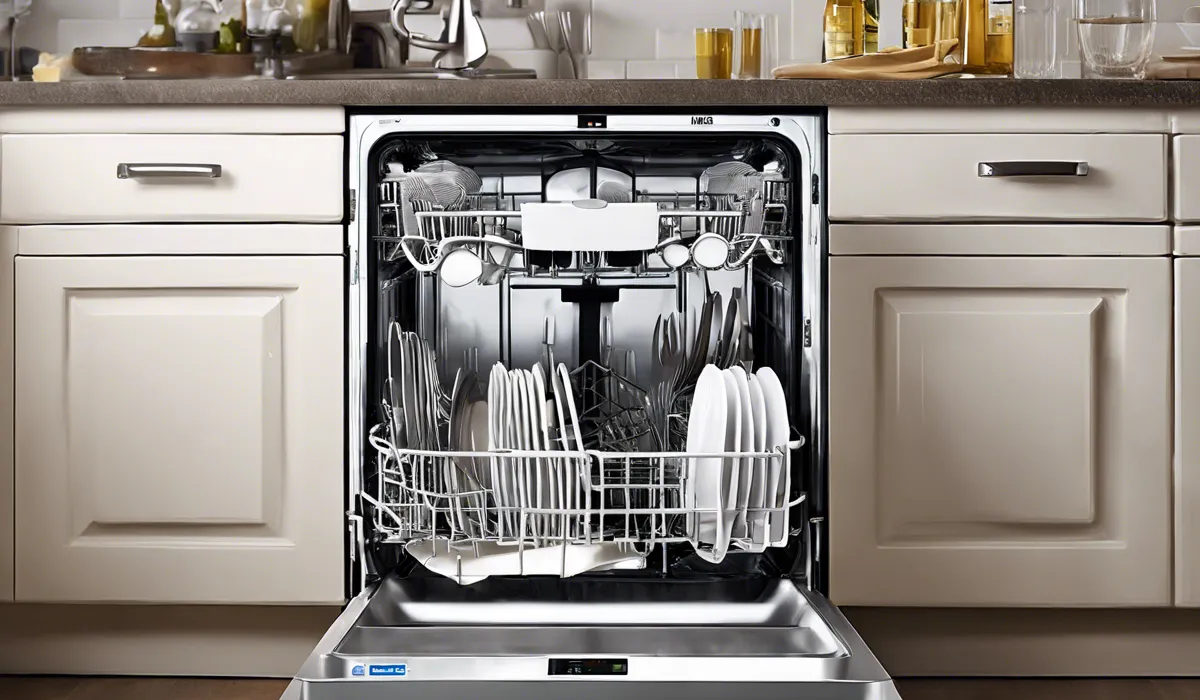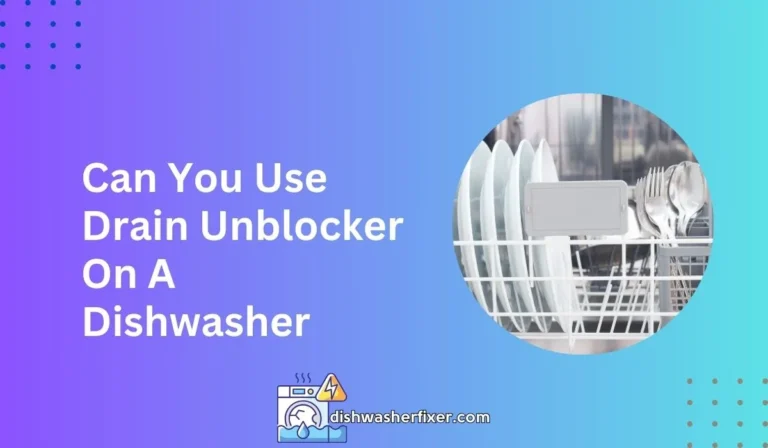How to Clean a Dishwasher That Hasn’t Been Used in a While
To clean a long-unused dishwasher, first inspect and clear the drain of debris. Run a hot water cycle with 2 cups of vinegar in the bottom to remove odors and buildup. Sprinkle baking soda and run a short cycle for extra freshness. Lastly, wipe the seals and exterior.
Pre-Cleaning Inspection and Preparation

Safety First: Disconnecting Power
Before beginning the cleaning process, prioritize safety by ensuring that your dishwasher is not connected to a power source.
This step is crucial to avoid any electrical hazards while working with water. Either unplug the dishwasher or turn off the power at the circuit breaker to secure a safe working environment.
Initial Inspection for Pests and Mold
Examine the interior and exterior of your dishwasher for signs of pests, mold, or mildew. These unwanted guests can cause health issues and impact the performance of your dishwasher.
If you notice any evidence of infestation or mold growth, address these issues promptly to ensure a clean and safe appliance.
Filter and Spinning Arms Check
Remove the dishwasher filter, typically found at the bottom of the appliance, and inspect it for trapped food particles or debris. A clogged filter can hinder water flow and cleaning efficiency.
Additionally, check the spinning arms for any blockages caused by food residue or mineral buildup, which can prevent them from distributing water evenly.
Cleaning the Door Gasket and Dishwasher Bottom
With a damp cloth, wipe down the door gasket—the rubber seal around the dishwasher door—to ensure a tight seal and prevent leaks.
Also, use a vacuum cleaner to remove any large particles or debris that have settled at the bottom of the dishwasher. This helps to clear the way for a more thorough deep clean.
Deep Cleaning the Dishwasher

Filter Maintenance: The Heart of Cleanliness
A clean filter is vital for a dishwasher to function properly. Use warm soapy water and a soft brush to meticulously clean the filter.
Make sure to rinse it thoroughly before putting it back in place. This will help prevent unpleasant odors and ensure that your dishwasher operates at its best.
Vinegar Cycle: Natural Deodorizing and Descaling
White vinegar is your ally in combating odors and mineral buildup. Place a cup of white vinegar on the top rack of your dishwasher and run a hot water cycle. The vinegar will naturally break down any grease and grime, leaving your dishwasher smelling fresh and clean.
Baking Soda Boost: Extra Freshness
After the vinegar cycle, sprinkle a generous amount of baking soda on the bottom of the dishwasher. Run a short, hot water cycle. The baking soda will further deodorize your dishwasher and help to remove any lingering stains or residues.
Detailing Tight Spaces and Spinning Arms
Using a toothbrush or small brush, scrub the nooks and crannies of your dishwasher that are hard to reach.
Pay special attention to the areas around the door edges and under the bottom rack. For the spinning arms, use a toothpick or needle to clear out any holes blocked by debris to restore proper water flow.
Maintenance and Preventive Measures

Reassembling and Testing Post-Clean
Once you have completed the deep cleaning, reassemble your dishwasher. Ensure that all components are back in place, then reconnect the power.
Run an empty cycle to confirm that everything is functioning correctly. Listen for any unusual noises and check for leaks, addressing any issues promptly.
Avoiding Mold and Mildew: Proper Aeration
Prevent mold and mildew growth in your dishwasher by leaving the door slightly ajar when not in use. This allows air to circulate and moisture to evaporate, creating an environment less conducive to mold and mildew.
Regular Filter Cleaning: Keeping Performance High
Based on how often you use your dishwasher, establish a routine to clean the filter and trap. Regular maintenance is key to preventing clogs and ensuring that your dishwasher cleans efficiently.
Scheduling Monthly Cleanings: Long-Term Care
Create a monthly schedule for deep cleaning your dishwasher. Consistent care will help to prevent buildup and maintain the appliance’s performance. Mark your calendar or set reminders to make this task a regular part of your household maintenance routine.
FAQs About Cleaning a Long-Unused Dishwasher
What is the first step in cleaning a long-unused dishwasher?
The first step is to inspect and clear the drain of any debris to prevent clogs and ensure proper drainage.
How do I remove odors and buildup from a long-unused dishwasher?
Run a hot water cycle with 2 cups of vinegar placed in the bottom of the dishwasher to remove odors and buildup.
What can I use to add extra freshness to my dishwasher after cleaning?
Sprinkle baking soda on the bottom of the dishwasher and run a short cycle for extra freshness.
How do I clean the seals of a long-unused dishwasher?
After running the cycles, wipe down the seals with a damp cloth to remove any leftover residue and prevent leaks.
Is it necessary to clean the exterior of the dishwasher as well?
Yes, wipe the exterior of the dishwasher with a suitable cleaner to keep it looking clean and to maintain hygiene.
Final Thoughts
Ensure a long-unused dishwasher operates efficiently by first removing any debris from the drain. Run a cycle with hot water and 2 cups of vinegar to tackle odors and buildup.
For added freshness, distribute baking soda and initiate a short wash. Finish by cleaning the seals and the machine’s exterior to maintain hygiene and performance.





